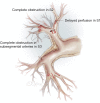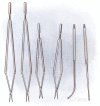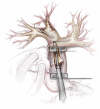Pulmonary endarterectomy: technique and pitfalls
- PMID: 35433367
- PMCID: PMC9012198
- DOI: 10.21037/acs-2021-pte-185
Pulmonary endarterectomy: technique and pitfalls
Abstract
Chronic thromboembolic pulmonary hypertension (CTEPH) remains a rare and underdiagnosed disease. After one or several episodes of acute pulmonary embolism, around 3% of patients develop CTEPH and two-thirds of these patients are potential surgical candidates. Besides surgery, additional treatment modalities are pulmonary arterial hypertension medication and balloon pulmonary angioplasty. Patients should be evaluated in CTEPH expert centers to ensure the most appropriate therapy. Pulmonary endarterectomy (PEA) is a complex, but standardized surgical procedure aiming to clear the obstructed pulmonary arteries completely. For optimal visualization, deep hypothermic circulatory arrest is a prerequisite. This article will give an overview of the evaluation, indication and surgical management of patients with CTEPH.
Keywords: Chronic thromboembolic pulmonary hypertension (CTEPH); balloon pulmonary angioplasty (BPA); pulmonary endarterectomy (PEA).
2022 Annals of Cardiothoracic Surgery. All rights reserved.
Conflict of interest statement
Conflicts of Interest: The authors have no conflicts of interest to declare.
Figures












References
-
- Galiè N, Humbert M, Vachiery JL, et al. 2015 ESC/ERS Guidelines for the diagnosis and treatment of pulmonary hypertension: The Joint Task Force for the Diagnosis and Treatment of Pulmonary Hypertension of the European Society of Cardiology (ESC) and the European Respiratory Society (ERS): Endorsed by: Association for European Paediatric and Congenital Cardiology (AEPC), International Society for Heart and Lung Transplantation (ISHLT). Eur Heart J 2016;37:67-119. 10.1093/eurheartj/ehv317 - DOI - PubMed
-
- Wiedenroth CB, Liebetrau C, Gall H, et al. The effective systematic heparin pre-treatment on thrombus formation on pulmonary artery catheter tips during pulmonary endarterectomy for chronic thromboembolic pulmonary hypertension: a randomized, double-blind study. J Thromb Thrombolysis 2017;44:335-40. 10.1007/s11239-017-1547-4 - DOI - PubMed
Publication types
LinkOut - more resources
Full Text Sources
